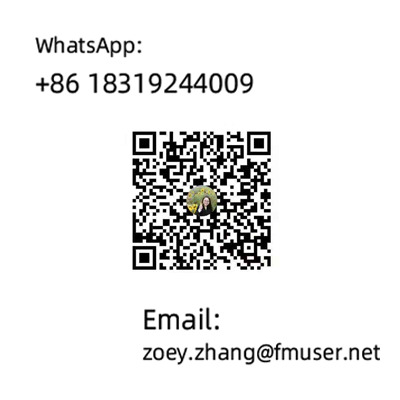Products Category
- FM Transmitter
- 0-50w 50w-1000w 2kw-10kw 10kw+
- TV Transmitter
- 0-50w 50-1kw 2kw-10kw
- FM Antenna
- TV Antenna
- Antenna Accessory
- Cable Connector Power Splitter Dummy Load
- RF Transistor
- Power Supply
- Audio Equipments
- DTV Front End Equipment
- Link System
- STL system Microwave Link system
- FM Radio
- Power Meter
- Other Products
- Special for Coronavirus
Products Tags
Fmuser Sites
- es.fmuser.net
- it.fmuser.net
- fr.fmuser.net
- de.fmuser.net
- af.fmuser.net ->Afrikaans
- sq.fmuser.net ->Albanian
- ar.fmuser.net ->Arabic
- hy.fmuser.net ->Armenian
- az.fmuser.net ->Azerbaijani
- eu.fmuser.net ->Basque
- be.fmuser.net ->Belarusian
- bg.fmuser.net ->Bulgarian
- ca.fmuser.net ->Catalan
- zh-CN.fmuser.net ->Chinese (Simplified)
- zh-TW.fmuser.net ->Chinese (Traditional)
- hr.fmuser.net ->Croatian
- cs.fmuser.net ->Czech
- da.fmuser.net ->Danish
- nl.fmuser.net ->Dutch
- et.fmuser.net ->Estonian
- tl.fmuser.net ->Filipino
- fi.fmuser.net ->Finnish
- fr.fmuser.net ->French
- gl.fmuser.net ->Galician
- ka.fmuser.net ->Georgian
- de.fmuser.net ->German
- el.fmuser.net ->Greek
- ht.fmuser.net ->Haitian Creole
- iw.fmuser.net ->Hebrew
- hi.fmuser.net ->Hindi
- hu.fmuser.net ->Hungarian
- is.fmuser.net ->Icelandic
- id.fmuser.net ->Indonesian
- ga.fmuser.net ->Irish
- it.fmuser.net ->Italian
- ja.fmuser.net ->Japanese
- ko.fmuser.net ->Korean
- lv.fmuser.net ->Latvian
- lt.fmuser.net ->Lithuanian
- mk.fmuser.net ->Macedonian
- ms.fmuser.net ->Malay
- mt.fmuser.net ->Maltese
- no.fmuser.net ->Norwegian
- fa.fmuser.net ->Persian
- pl.fmuser.net ->Polish
- pt.fmuser.net ->Portuguese
- ro.fmuser.net ->Romanian
- ru.fmuser.net ->Russian
- sr.fmuser.net ->Serbian
- sk.fmuser.net ->Slovak
- sl.fmuser.net ->Slovenian
- es.fmuser.net ->Spanish
- sw.fmuser.net ->Swahili
- sv.fmuser.net ->Swedish
- th.fmuser.net ->Thai
- tr.fmuser.net ->Turkish
- uk.fmuser.net ->Ukrainian
- ur.fmuser.net ->Urdu
- vi.fmuser.net ->Vietnamese
- cy.fmuser.net ->Welsh
- yi.fmuser.net ->Yiddish
What Does it mean for an RF Amplifier to be Single-ended?
Date:2019/12/10 10:27:51 Hits:
If you're an electrical engineer and familiar with the musical artist Adele's most recent single, "Hello", you may have thought to yourself, "Man, sounds like she could really use a good quality amplifier!"Speaking of amplifiers, that's this week's topic of choice. More specifically, single-ended radio frequency amplifiers.In this post, you'll learn all about RF amplifiers, how they compare to single-ended amplifiers, and advantages and disadvantages of single-ended amps. Let's make sure you have a solid understanding of RF amplifiers, first.
What is an RF Amplifier?
Today, amplifiers operate in different kinds of modes, which are also known as classes, in order to perform their function in a satisfactory manner. Solid state devices (also known as SSPAs or Solid State Power Amplifiers) are used to make modern radio frequency amplifiers even better and more efficient in terms of signal conversion.
Breaking Down the Individual Components
Power Supply - The main purpose of the power supply is to convert alternating current into direct current. This is a necessary part of the device since the semiconductor devices that are present within the equipment require direct current to operate. It may also be helpful for you to understand The Secret to Overcoming the Power Supply Rejection Ratio (PSRR).
Input Stage - This is the part of the device where the input signals are received and subjected to amplification by the output stage.
Output Stage - At this stage, the weak input signal is converted into a high-powered replica. This portion of the device uses a number of high power transistors and is responsible for generating the most amount of heat by the amplifier.
Using a Radio Frequency Amplifier
Radio frequency amplifiers are primarily used to drive another source of high power. They are also used to drive a transmitting antenna and for exciting microwave cavity resonators. This technology is useful for voice and data communication and for weather sensing by using radar.
What Single-ended Amplifiers Do
What this does is that it creates an amplifier with a low distortion as well as lower costs. However, for this kind of device to work the output filter and the matching network need to be fairly high. If the bandwidth is low, it needs to be returned for a frequently changing operating frequency. While this makes no difference for broadcasting purposes, it can cause inconveniences for amateur radio hobbyists.
Advantages
It is generally more cost-effective to use single-ended radio frequency amplifiers, a consideration that often plays a major part in deciding which amplifier to use.
Some Disadvantages
Leave a message
Message List
Comments Loading...





